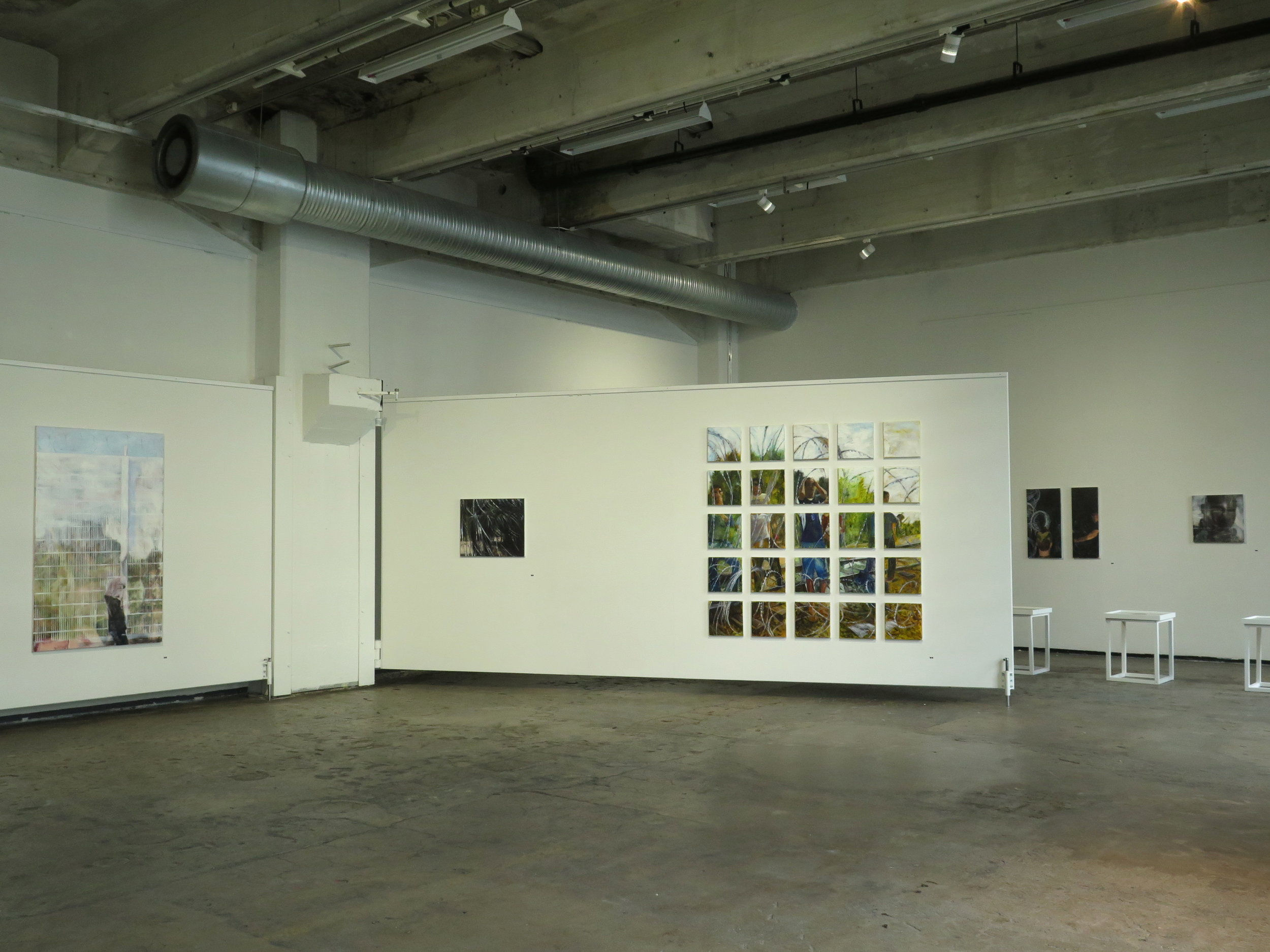Distribution of Crisis
Group Exhibition
April 14 – April 22 2016
Kaapelitehdas, Valssaamo
Works of Kalle Hamm, Dzamil Kamanger and Nayab Noor Ikram can be seen in the background. Kaapelitehdas, Valssaamo.
Magdalena Åberg: Fences
Decades after the fall of the Berlin wall, the signing of the Schengen Agreement and the breaking up of borders in Europe, a new era started as the great streams of refugees streaming in from the south and the east this past summer of 2015. I was following the news and had to paint based on the images that came across the news. I was engulfed by Hungarian spiral barbed wire fences while I was listening to ballet music from the time of the Sun King on the radio. Cultural meetings were danced forth in a pompous festive spirit; Turks, Native Americans, “the wild” were described in French tones. And I experienced the painting I was working on as if some sort of Hungarian or Finno-Ugric dance. A thick layer of titanium white, ever more, wanted to paint the barbed wires glistening and glittering, as a carnivalistic dancing chaos. There, underneath, vaguely, hands and trouser legs barely visible on the other side, under the glitter.
Magdalena Åberg (born 1972), a Finnish artist, primarily works in oil and was, at the end of that summer when the crisis was growing and coming ever closer, having problems continuing on with the motifs she was working on at the time. She felt a pressing need to try to paint the difficult subject, and after various tries the series Fences came into existence; paintings with barbed wire fences as motif. As a Finn and European, the artist is unavoidably a part of Fortress Europe: How does it feel? How is she supposed to understand this?










